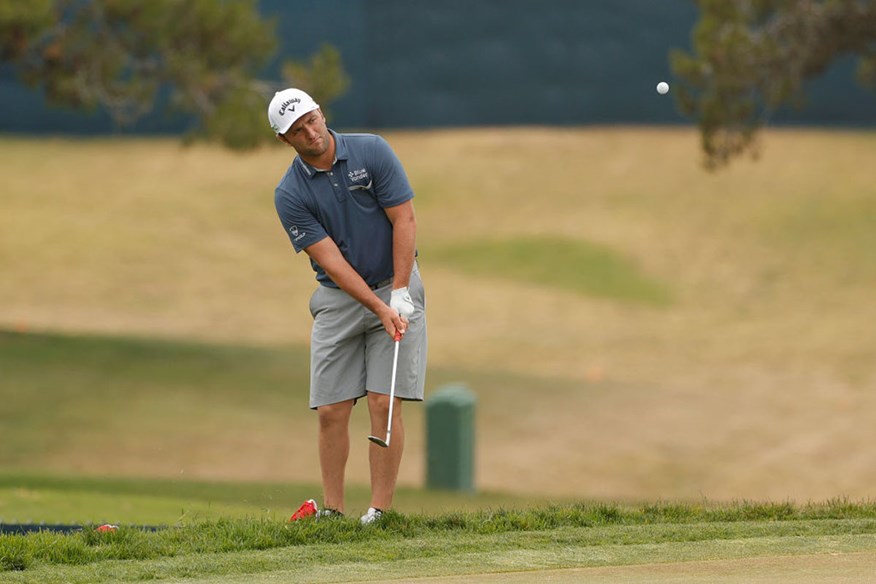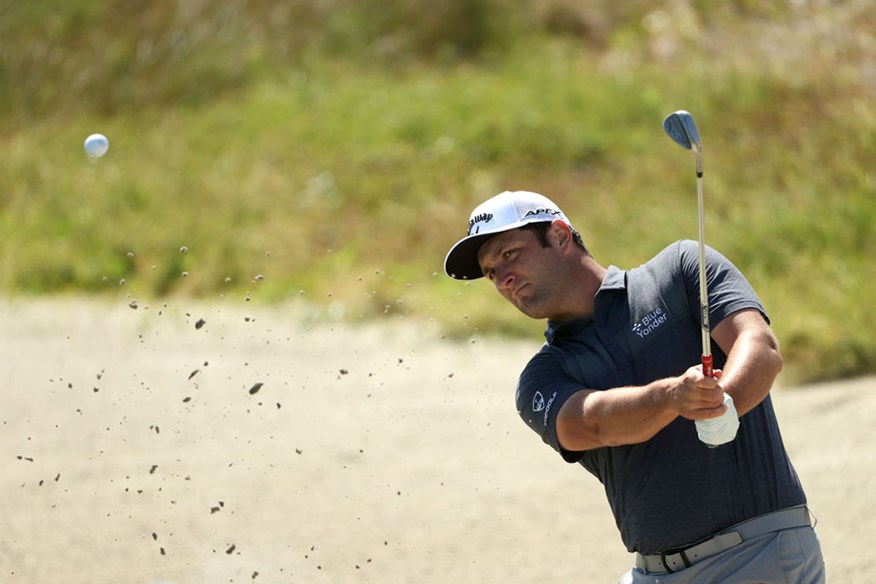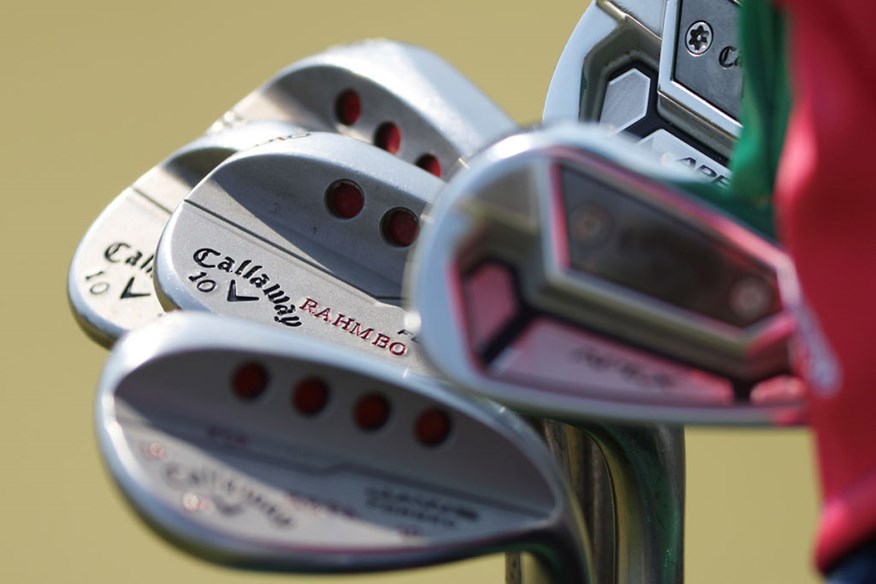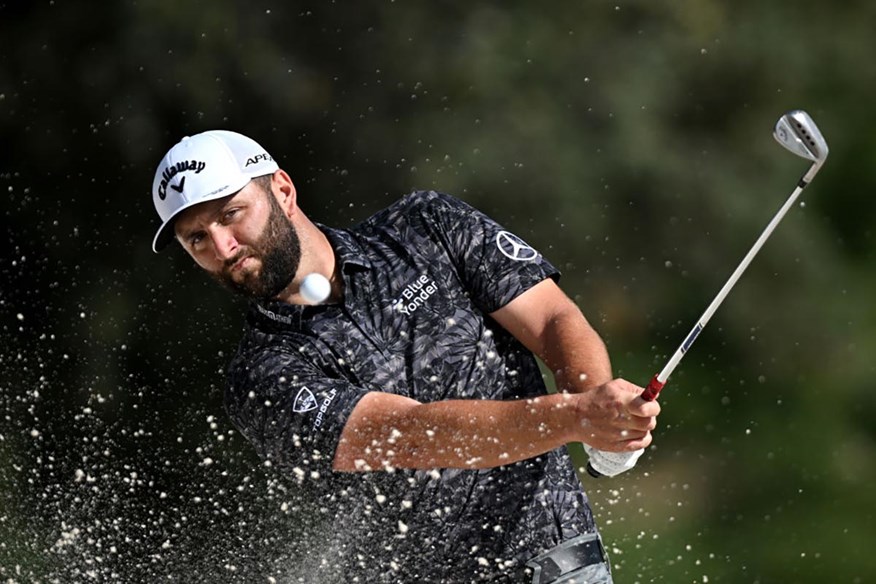Jon Rahm: Master golf’s short game with my lessons
Last updated:
Major champion, former World No.1 and European Ryder Cup star Jon Rahm shares the short-game lessons that helped him to the top.
A razor-sharp short game is the key to really low scores and saving a bad round. From pitching to bump and runs and splashing shots out of bunkers, Jon Rahm is brilliant at it all, as he showed on his way to matching countryman Seve Ballesteros’ three Spanish Open titles at the 2022 event.

We visited Rahm in the United States, where he gave us the secrets to his short-game and how you can get up and down more often!
RELATED: WITB Jon Rahm
Jon Rahm’s 3 rules to hit consistent chip, pitch and splash shots
#1: Always check the lie of your ball before you even think about how you’re going to play a short-range shot. Whenever you see a top player prepare to hit a chip shot, the first thing you’ll always see them do is take a very close look at how the ball is sitting. The quality of the lie will influence not just your club selection, but the type of shot you can play.
#2: Whichever shot I’m looking to play from within 100 yards or so of the green, I’m usually looking for a vertical attack angle with the shaft through impact. When I’ve got the club in that position I’m making full use of the loft on the club and I won’t have to manipulate the clubface through impact. The only exception to this is when I want to hit a bump-and-run. Then I’ll have the shaft leaning more towards the target.
#3: Perhaps the most important rule of all for the short game is to accelerate the clubhead through the ball. That’s Phil’s mantra, too. If your hands stop moving, your wrists will instinctively ip at the ball to create the speed and you can hit all types of bad shots. I like to control most short- range shots with my upper body instead of relying on my hands.

Jon Rahm’s keys to master the bump-and-run
My philosophy on the short game is to always pick the simplest shot available. There’s no point playing a flashy flop from the fringe when a simple bump-and-run will do the job nicely. I use this shot whenever I can since the method is easy to learn and repeat. It’s a great shot for amateurs to learn because it gets the ball on to the ground quickly where it can roll towards the hole without too much spin. It’s basically a long putt with an iron. Here’s how to play it.
#1: The first step in mastering this shot is knowing which club to select. Choose a club that will carry on to the green and then roll out along the ground to the flag. I like to play the ball back in my stance o my back foot and push my hands forwards towards the target. This takes the unnecessary hand action out of the shot.
#2: It may look like I’m taking the club away with my hands and arms here but, in reality, I’m controlling the movement with my shoulders – as I would with a putt. Playing the ball back in the stance also gives me the feeling that the club is going to work slightly inside going back. This ensures that I don’t create too much spin.
#3: The secret to playing this shot well is keeping it simple. As you rock your shoulders back and forth, simply allow your hands to lead the clubhead through impact. Through impact you just want to ensure that you keep the clubhead moving towards the target. Avoid decelerating through impact at all costs.
RELATED: Best Wedges

Jon Rahm’s tips to pitch it close
#1: Use your body for ultimate control. My finish position here tells you pretty much everything you need to know about how to hit a controlled pitch from within 80 yards or so of the green. My chest is facing the target, my weight is on my front foot and my right arm is drawn across my chest.
#2: My number one pitching swing thought is to be ‘brave’ through the ball. This is no time to try to ease up through impact or to try to get too cute with the swing.
#3: I like to set up with my weight and hands a little forward. From here, the shot is all about upper body rotation. I never get my hands involved because, in all honesty, I’m not sure what to do with them through impact. I’ll only consciously bring them into play if I have to hit a specialist shot – when I have to launch the ball much higher than normal or to keep it low under the trees.

Jon Rahm on how to be aggressive from bunkers
Depending on the lie, the distance and the pin position, I have three go-to bunker shots – a standard shot that runs out a little on landing, a spinny shot that flies high and stops quickly and an intentional chunk-and-run that flies a little lower o the face and rolls out a lot on landing. That’s too much for most amateurs to think about so my advice is to focus on the regular splash and get good at that. The good news is that it’s easier than it looks – here’s how to hit controlled shots from the sand.
#1: For a standard or spinning shot, I play the ball forward in my stance and set as much weight as possible on my front foot. I set my hands back a little so they’re almost behind the ball. That creates more angle in my left wrist, which adds loft to the clubface.
#2: Once you’ve settled into your address, keep your weight on your front foot as you make your swing. My preference is to have the face wide open, but it’s not essential. I like the feeling of being able to get almost vertical on my backswing.
#3: For me, the secret to playing great bunker shots is maintaining the loft on the clubface all the way through impact. To do this, I focus on holding the angle I created at the back of my left wrist as I slide the club underneath the ball.
RELATED: Lower your golf scores in five easy steps

Jon Rahm on how to play the flop shot
My golden rule for flop shots is to keep the clubhead accelerating. The technique is almost identical to that used to hit a splash shot (above). I hold the angle at the back of my left wrist so my palm faces the sky.
READ AND WATCH NEXT: Mark Crossfield fixes your short game
-
 Jon Rahm shares his short game lessons.
Jon Rahm shares his short game lessons.
-
 Jon Rahm plays a shot from a bunker.
Jon Rahm plays a shot from a bunker.
-
 Jon Rahm plays a shot from a bunker.
Jon Rahm plays a shot from a bunker.
-
 Jon Rahm plays a shot from a bunker.
Jon Rahm plays a shot from a bunker.
-
 Jon Rahm plays a chip.
Jon Rahm plays a chip.
-
 Jon Rahm plays a pitch shot.
Jon Rahm plays a pitch shot.
-
 Jon Rahm's wedges.
Jon Rahm's wedges.
-
 Jon Rahm won his third Spanish Open in five years.
Jon Rahm won his third Spanish Open in five years.
-
 Jon Rahm became the first Spanish golfer to win the US Open with victory at Torrey Pines.
Jon Rahm became the first Spanish golfer to win the US Open with victory at Torrey Pines.

